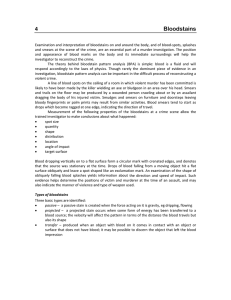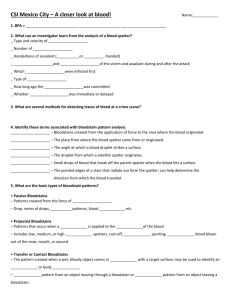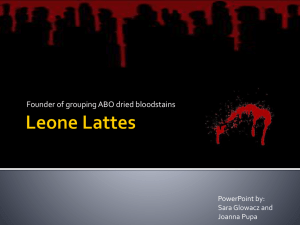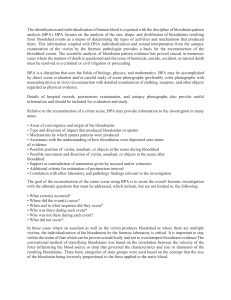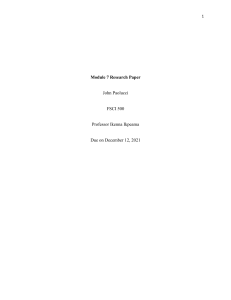Categories of Bloodstains PASSIVE TRANSFER
advertisement
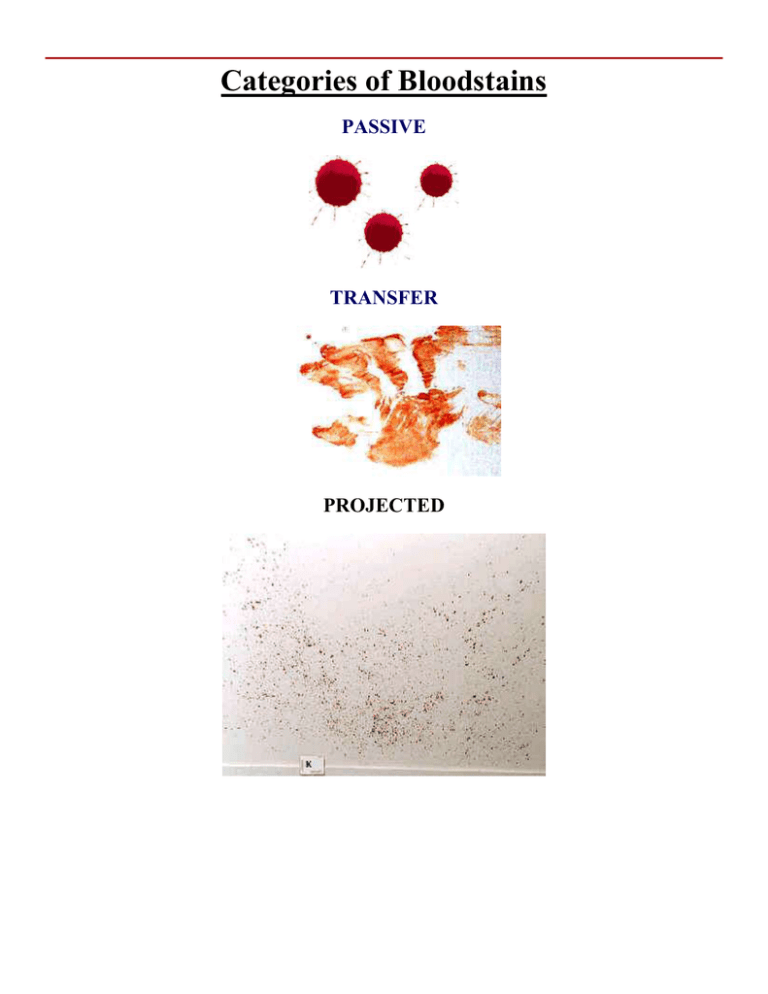
Categories of Bloodstains PASSIVE TRANSFER PROJECTED TRANSFER BLOODSTAINS A transfer bloodstain is created when a wet, bloody surface comes in contact with a secondary surface. A recognizable image of all or a portion of the original surface may be observed in the pattern, as in the case of a bloody hand or footwear. Transfer bloodstains can be further subdivided into; Contact bleeding Swipe or Smear Wipe Smudge PASSIVE BLOODSTAINS Passive Bloodstains are drops created or formed by the force of gravity acting alone. This category can be further subdivided to include; Drops Drip patterns Pools Clots TARGET SURFACE TEXTURE Blood droplets that strike a hard smooth surface, like a piece of glass, will have little or no distortion around the edge. Blood droplets that strike linoleum flooring take on a slightly different appearance. Notice the distortion (scalloping) around the edge of the blood droplets. LARGE VOLUMES OF BLOOD "Dripped Blood" "Spilled Blood" "Projected Blood" (through syringe) PROJECTED BLOODSTAINS Projected bloodstains are created when an exposed blood source is subjected to an action or force, greater than the force of gravity. The size, shape, and number of resulting stains will depend, primarily, on the amount of force utilized to strike the blood source. This category can be further subdivided to include; Arterial Spurt Bloodstain pattern(s) resulting from blood exiting the body under pressure from a breached artery: Cast-off Blood released or thrown from a blood-bearing object in motion: Impact Spatter •Medium Velocity Force of 5 to 25 feet/sec. Preponderant stain size 1 to 4mm in size High Velocity Force of 100 feet/sec. and greater Preponderant stain size 1mm in size and smaller Mist like appearance IMPACT ANGLE DETERMINATION By utilizing trigonometric functions its possible to determine the impact angle for any given blood droplet. SIN θ = opp (a) hyp (c) SIN θ = Width (a) 1.5cm Length (c) 3.0cm Width (a) 1.5 cm = SIN θ Length (c) 3.0 cm 0.5 = SIN θ Sin -1 (.5) = 30 θ = 30 ° Animations of: Surface Tension and Droplet Cohesion Droplet Displacement, and Impact Angle POINT OF CONVERGENCE AND ORIGIN DETERMINATION THREE DIMENSIONAL POINT OF ORIGIN DETERMINATION WITH IMPACT ANGLE CALCULATIONS
